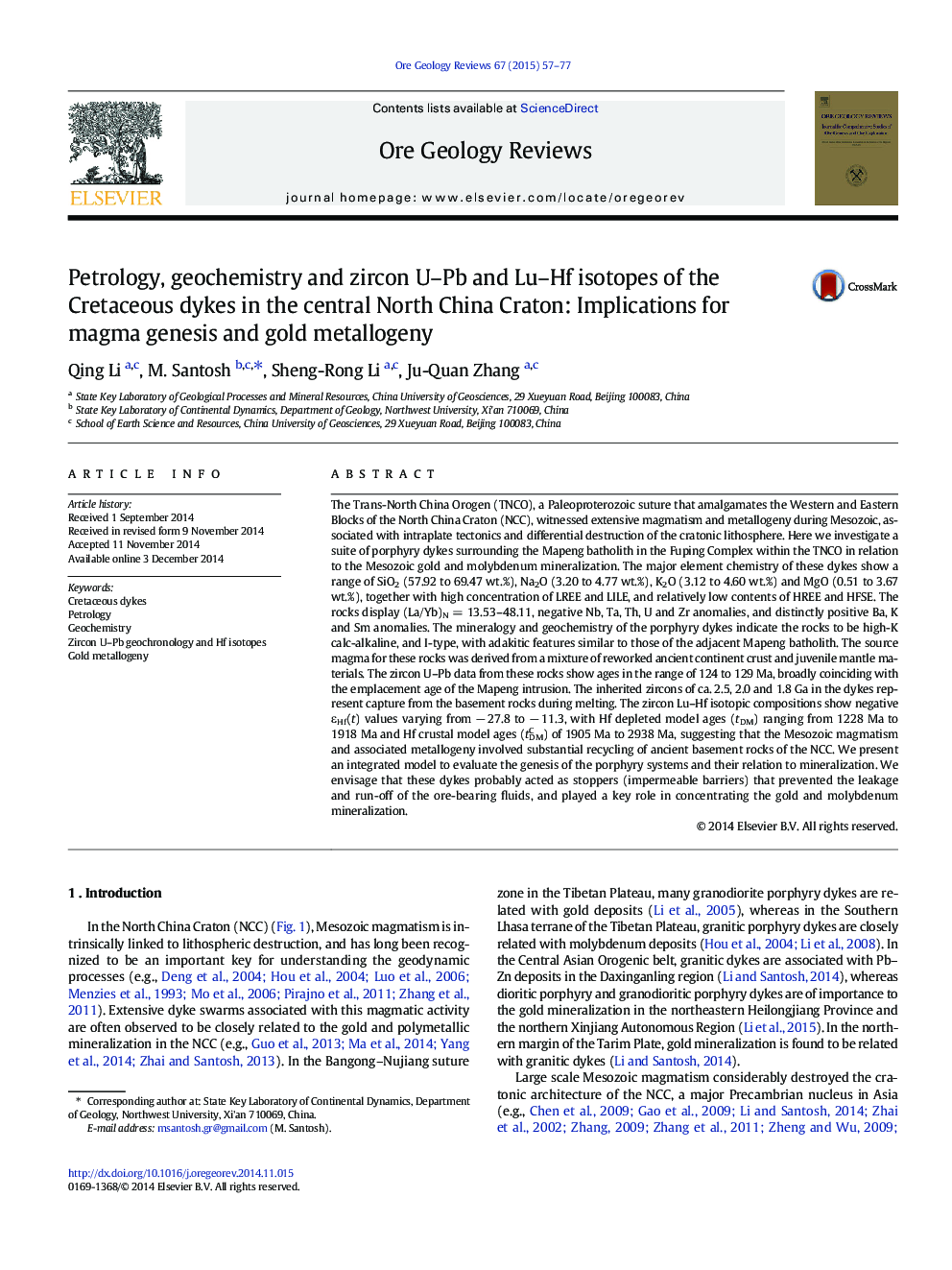| Article ID | Journal | Published Year | Pages | File Type |
|---|---|---|---|---|
| 6435881 | Ore Geology Reviews | 2015 | 21 Pages |
â¢The porphyry dykes show high-K calc-alkaline and I-type affinity with adakitic features.â¢Their 124 to 129 Ma emplacement ages coincide with the major Mesozoic magmatic event in the NCC.â¢The zircon εHf(t) values suggest both reworked and juvenile ancient crust.â¢The dykes probably acted as stoppers (impermeable barriers) and concentrated the gold and molybdenum mineralization.
The Trans-North China Orogen (TNCO), a Paleoproterozoic suture that amalgamates the Western and Eastern Blocks of the North China Craton (NCC), witnessed extensive magmatism and metallogeny during Mesozoic, associated with intraplate tectonics and differential destruction of the cratonic lithosphere. Here we investigate a suite of porphyry dykes surrounding the Mapeng batholith in the Fuping Complex within the TNCO in relation to the Mesozoic gold and molybdenum mineralization. The major element chemistry of these dykes show a range of SiO2 (57.92 to 69.47 wt.%), Na2O (3.20 to 4.77 wt.%), K2O (3.12 to 4.60 wt.%) and MgO (0.51 to 3.67 wt.%), together with high concentration of LREE and LILE, and relatively low contents of HREE and HFSE. The rocks display (La/Yb)N = 13.53-48.11, negative Nb, Ta, Th, U and Zr anomalies, and distinctly positive Ba, K and Sm anomalies. The mineralogy and geochemistry of the porphyry dykes indicate the rocks to be high-K calc-alkaline, and I-type, with adakitic features similar to those of the adjacent Mapeng batholith. The source magma for these rocks was derived from a mixture of reworked ancient continent crust and juvenile mantle materials. The zircon U-Pb data from these rocks show ages in the range of 124 to 129 Ma, broadly coinciding with the emplacement age of the Mapeng intrusion. The inherited zircons of ca. 2.5, 2.0 and 1.8 Ga in the dykes represent capture from the basement rocks during melting. The zircon Lu-Hf isotopic compositions show negative εHf(t) values varying from â 27.8 to â 11.3, with Hf depleted model ages (tDM) ranging from 1228 Ma to 1918 Ma and Hf crustal model ages (tDMC) of 1905 Ma to 2938 Ma, suggesting that the Mesozoic magmatism and associated metallogeny involved substantial recycling of ancient basement rocks of the NCC. We present an integrated model to evaluate the genesis of the porphyry systems and their relation to mineralization. We envisage that these dykes probably acted as stoppers (impermeable barriers) that prevented the leakage and run-off of the ore-bearing fluids, and played a key role in concentrating the gold and molybdenum mineralization.
Graphical abstractDownload full-size image
